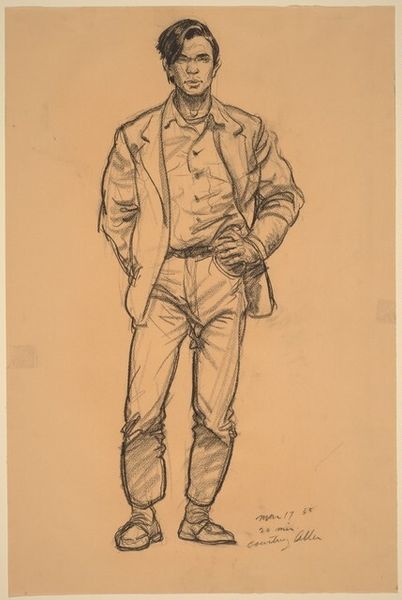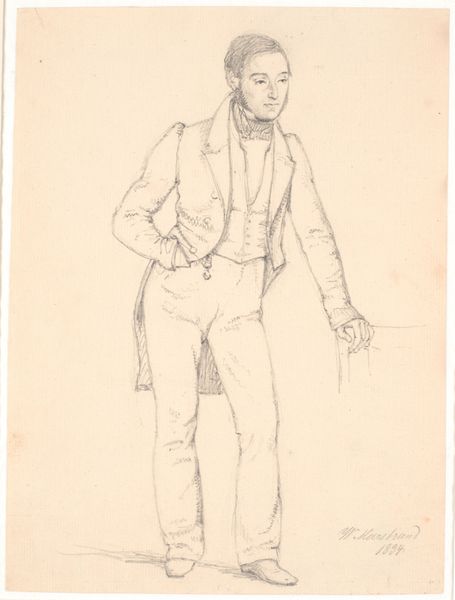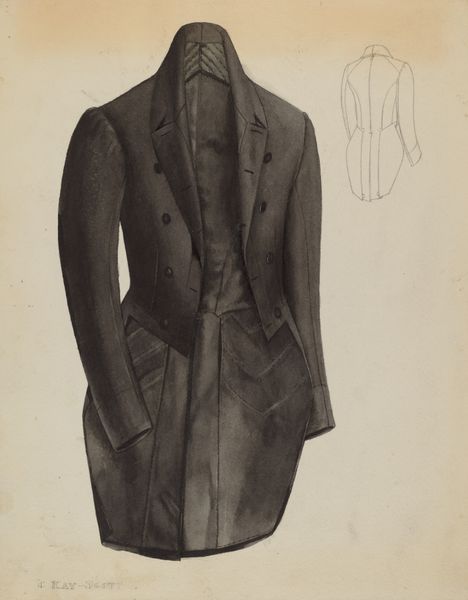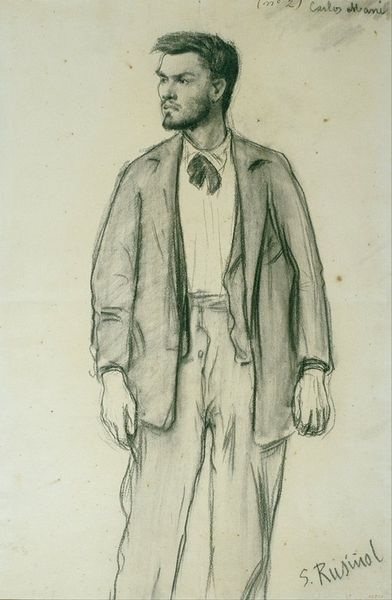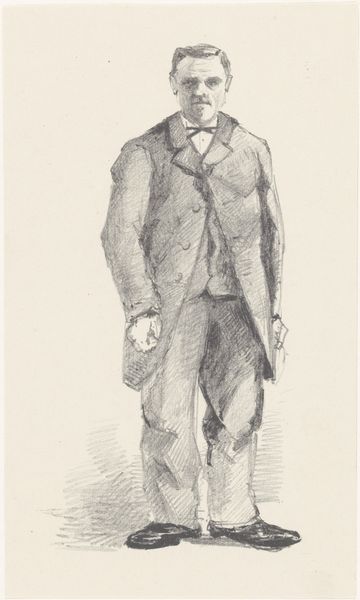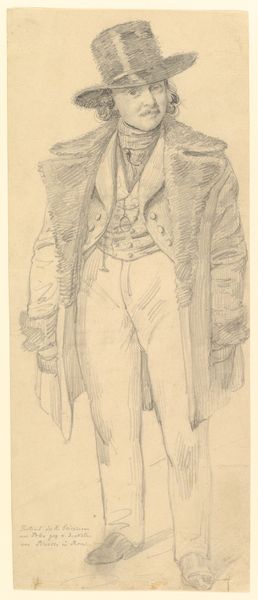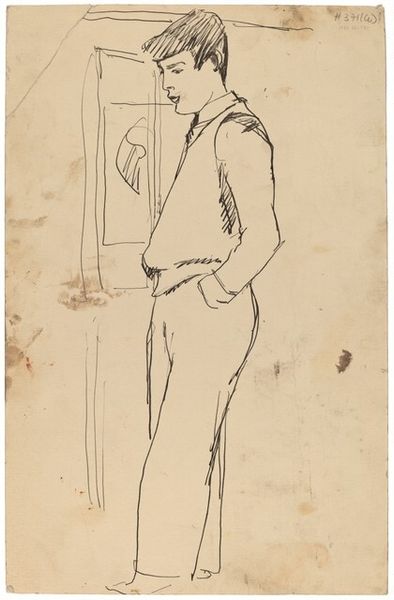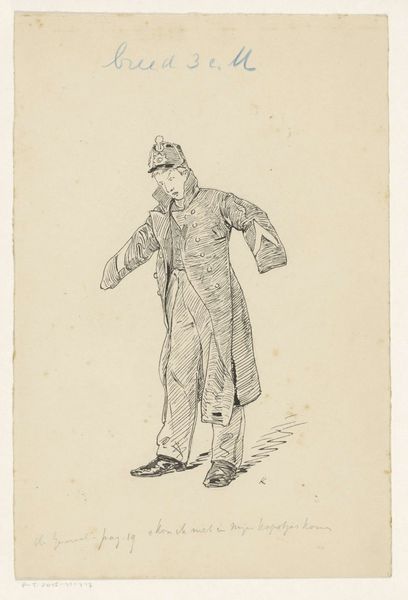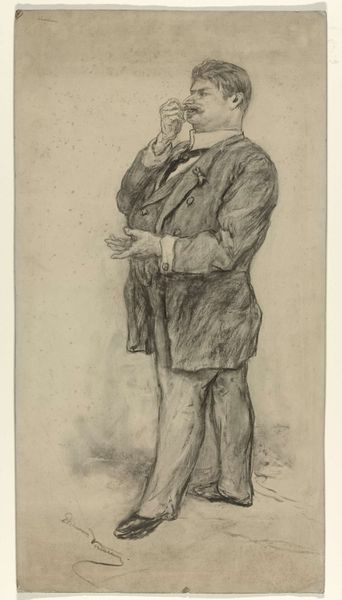
drawing, print
#
pencil drawn
#
drawing
#
toned paper
#
light pencil work
# print
#
pencil sketch
#
personal sketchbook
#
ink drawing experimentation
#
pen-ink sketch
#
men
#
sketchbook drawing
#
pencil work
#
sketchbook art
Dimensions: Overall: 8 7/8 x 6 1/16 in. (22.5 x 15.4 cm)
Copyright: Public Domain
Curator: What we have here is George Du Maurier's "Conductor: study from life," a work likely created sometime between 1850 and 1900, now residing here at the Met. Editor: Ah, the maestro himself! My first thought? The air around him seems thick with the anticipation just before the downbeat. There's a nervous energy, even in pencil strokes. Curator: Interesting take. This pencil study provides a glimpse into the artistic process of Du Maurier, famed for his social satires in 'Punch' magazine. One wonders about the conductor's role, particularly during that period. Conducting wasn’t just about keeping time, it was about projecting power, almost a visual demonstration of social hierarchy. Editor: Power, yes, but also vulnerability. See the slight downturn of his mouth, that almost hesitant posture? It speaks volumes of the pressure of performance, of holding an orchestra – and an audience – in his hands. There's almost a soulful vulnerability there, despite the formal attire. I bet if the conductor had lived today, we'd have spotted him as a charismatic stand-up comedian or something like that. Curator: A comedian! An unorthodox reading but consider Du Maurier’s role as a visual satirist, always making pointed observations about societal behaviour. The attire, the formality… maybe he's hinting at the absurdities of high society itself, using the conductor as a stand-in. A reflection on performance beyond the concert hall, perhaps. Editor: You know, now that you say it, there's almost a staged quality, the high brow arrogance of men of that period. It’s as if the conductor is both conducting and being conducted by the expectations of his social role. The subtle mocking feels perfect for an illustrated joke about culture and class! Curator: And the sketch medium amplifies that, I believe. It provides us with an intimate encounter and enables the expression of ideas and opinions, which also fits within the cultural role that satire held in that period, even now. The personal sketchbook unveils his underlying narrative in the image of the conductor and what he represents as an image. Editor: So much emotion conveyed in such quick strokes... like a fleeting musical phrase captured on paper. It really makes you wonder about the conductor’s life outside that tuxedo. That brief expression from the Maestro seems to have it all. Well, I’m off to find the next artwork on our tour. Thank you for letting me riff on this little beauty. Curator: Thank you. The power of these pieces to act as cultural artifacts is quite impressive, especially in such a compact aesthetic frame.
Comments
No comments
Be the first to comment and join the conversation on the ultimate creative platform.
